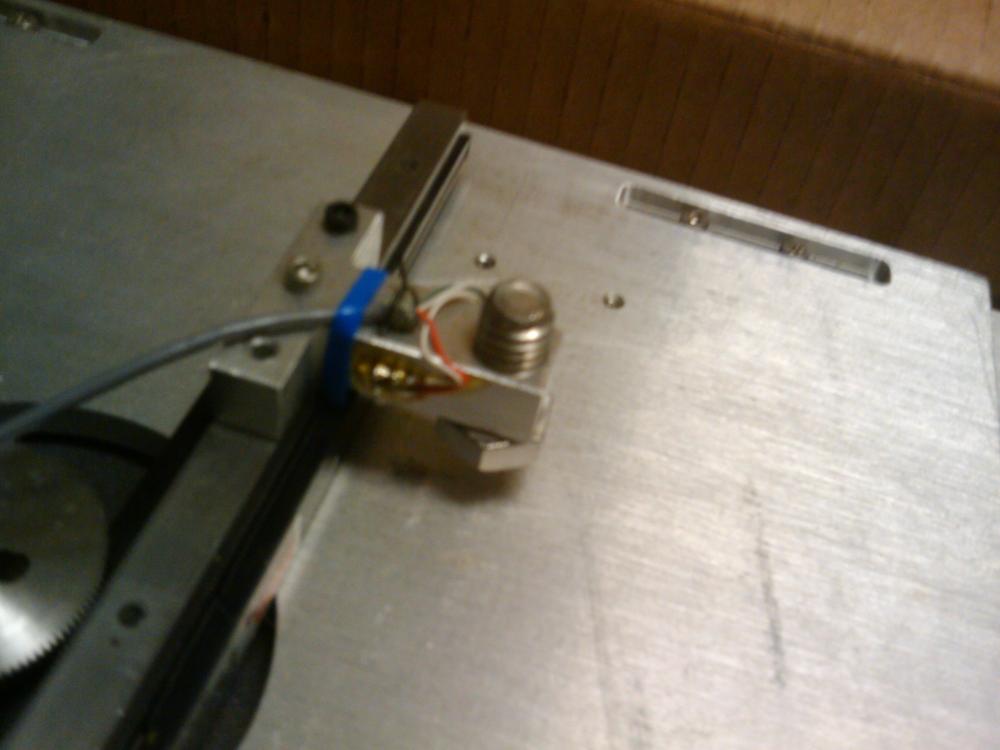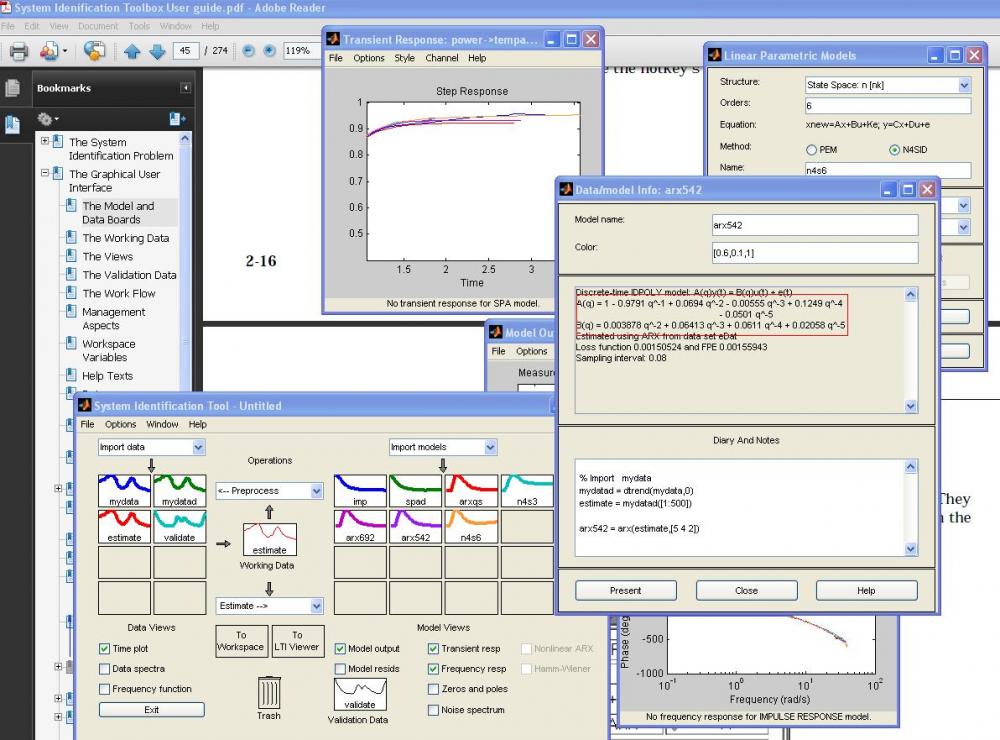
GSR
-
Posts
131 -
Joined
-
Last visited
Content Type
Profiles
Forums
Downloads
Gallery
Posts posted by GSR
-
-
It is a single diode which, by itself, can perform half wave rectification . The terminolgy of "rectifier" and "diode" in single diode AC->DC conversion is purely symantics. You will need 2 of them if you are using a center tapped transformer or 4 (more usual) for non- center tapped.
Thankssssssssss

-
I just read a MBRS140T3 document from osemi.com, MBRS140T3 is a chip of Schottky Power Rectifier. Two leads are in the MBRS140T3 chip. That makes me confused

My understand for a rectifier is something like a diode bridge which convert the AC to DC. It should have 2 AC input and 2 DC output (one is gnd) connectors. I am afraid I misunderstand what is power rectifier, so I google it. The answer from google is "Power rectifiers supply power from an AC source to a DC load".

Now the MBRS140T3 chip has only 2 leads. One should be AC input, the other one should be DC output. I guess the only possibility is that it cut the negative voltage half cycle and only use the positive half. Am I correct?? If that is the case. How I should connect the Schottky Power Rectifier to get 100% duty cycle in "positive voltage output" (not 50% positive and 50% negative)?

THanks
-
Hi,
I am reading a neural network book and try to learn it by myself. I have some idea how neural network could use to classify time-independent patterns (like classify between 2 letters). However, I have no clue how it can classify a time signal. For example, I want to classify whether a song is singed by a male/female singer. How to do that?? I need only general conceptual suggestion. Any thing like websites suggestion will help
Thanks
-
$750+tax =~ $820
The following will be the config
Operating systemGenuine Windows 7 Home Premium 64-biteditProcessor and GraphicsIntel®Core™2 Duo SU9600 (1.60GHz, 800MHz FSB) w/512MB ATI Mobility Radeon™ HD 4550 GraphicseditMemoryFREE Upgrade to 4GB DDR3 System Memory (2 Dimm)editHard driveFREE Upgrade to 500GB 7200RPM SATA Hard Drive with HP ProtectSmart Hard Drive ProtectioneditDisplay12.1" diagonal WXGA High-Definition HP LED Widescreen (1280x800) with Integrated Touch-screeneditPersonalizationWebcam Only - For HP Mobile Broadband only (WWAN)editNetworkingIntel Wireless-N CardeditIncluded Software BundleBumptop™, DigiFish® Dolphin, Corel® Paint it! Touch™, Megatouch GameseditKeyboardHP KeyboardeditPrimary battery6 Cell Lithium Ion Battery (standard)editOffice softwareMicrosoft® Works 9.0edit
-
Thanks so much !
 :thumbup1:
:thumbup1: -
Dear all,
I am working on a system which has a load cell on it. I previously worked with 4 output lines load cell. The one I see here has 3 lines output. One of the line is connected across both side. Could anyone please provide some information about this type of load cell? (the specific name, theory, document, anything)

Thanks
-
Just go to the developer day today. My 1st time to go to LabVIEW Developer Education Day
Reason that you should go
If you want to know how LAVA is popular (almost all NI speakers/presenters metion LAVA)
If you want to get $200 voucher for exam
If you want to get $2000 online course material (3% chance to win today)
If you want to get bestbuy gift card (8% chance to win today)
If you want to know about some how to "Improving the Performance of Your LabVIEW Applications "
If you want to know some tricks for your CLD exam.
==very good, I can't find the presentation material online.
==Using 3-4 pages of ppt slide to summarize what you need to get high points in styles and documentation (so you don't need to read the style book). I found that this is very useful
==Tell you some "Timing" property that you may need to use in the exam. It is very difficult if you have not thought this ahead.
Reason that you should not go
If you don't want to get bored to listen "Speed Up LabVIEW Development" (Poor material, not because of the speaker/presenter)
If you don't think you can follow a 2 hrs very pure programming topic "Graphical Scripting for LabVIEW"
I will strongly suggest you that to join this event if you plan to take the certification exam
-
I learned this topic years ago, and I want someone to confirm my understanding

Assume I have 2 diodes. The reverse breakdown (BD) voltages are 10V and 6V respectively. They are connected in series.
-----|>|----------|>|-------
| ..............................|
| ..............................|
| ..............................|
----------- (-8V+)---------
I think if the 10V BD-diode is on the right and the 6V BD-diode is on the left, both of them will still be OK
If they switch the position, the 6V BD-diode will breakdown
Am I right????

-
I think I found what I need

ulta-capacitor
Maxwell technology
* BCAP0350E250T03
* ~$23 each (sale: rell.com)
* 350F/2.5V
* max peak current 220A
* OD = 33 X L = 62 mm
* BCAP0100 P270
* ~$18 each (sale: Tecate Group)
* 100F/2.7V
* max current 54A
* 0.025 kg
* OD =25.0 X L=50.0 mm
-
Do you believe this?? Is it just a battery inside the cover????
<h2 class="product_name">Super Capacitor - 10F/2.5V</h2>13x33.5mm
http://www.sparkfun.com/commerce/product_info.php?products_id=746
data sheet
-
OK, let's do some maths.
If we take 30V x 5A for 1 second, you need 150 Joules of stored energy.
Stored energy in a capacitor is W=0.5*CV^2, so you need at least 1/3 Farad capacitor. If you want to keep 5A for the whole second, make sure you have some margin...
Check out these puppies.
EDIT: I think those are huge... well it depends=> Dimensions: 9"L x 3"W x 3"H
Thanks!

I am trying to look for another information which is the amount of Watts that a 1.5V rechargeable battery can produce. I just read an information which said that a "D" battery can produce 28A. This is too impressive
 . I am not sure the information is right. However, I only need 4-5 "D" batteries if the information is right
. I am not sure the information is right. However, I only need 4-5 "D" batteries if the information is right 
-
Why would you want to use capacitors? Look at using a MOSFET circuit. A FET will most certainly be able to handle the current requirements but it will leave a footprint about the size of a small, surface-mount IC.
I want to use capacitors because I need to make sure the power supply is stable for that 1s. The battery power pack may not be able to generate enough current to meet the motor requirement, so I use the capacitors to store enough energy for the 1s usage. The idea is similar to a "flash" in a camera.
-
Not exactly what you ask for, but I thought I'd mentioned it.
I think I should explain a bit more clear

Requirement: Motor generate strong torque for 1s and then have 1s break
Information of the motor: to meet the required torque 5A@30V can do that
Constriction: Use ~12V 2400mAh battery pack and the control circuit as small as possible
My plan was: boost up 12V to 30V and store the energy in capacitors; a controller will control the discharge the power to motor and recharge the capacitors.
My question was: Where I can find the capacitors which is suitable for my project
-
Dear all,
I tried to build up a circuit which controls current though a DC motor. The motor needs to generate strong torque; and the input power will be battery ~12V 2400mAh battery pack. Previously, the motor has been tested. The peak current needed is 5A@30V for ~1s. Then there will be 1 second break before another peak.
My plan is to build up a "capacitor train" which has ~5 "high energy density" capacitors. My circuit will include a boost up circuit to change the 12V to 30V DC and then charge the capacitors. After that, the circuit will control the capacitors discharge the energy to motor in sequence; and it will control the recharge of capacitors.
(The circuit has to be as small as possible)

my questions is where I can find the small and "high energy density" capacitors for this circuit?

-
Totally depends on your application. ie: is the output voltage higher than the input voltage? What's the current requirements? etc.
Output is higher than the input in my case
Current, ...... at much as possible because for energy storage
I am thinking that opamp may require power input, but the power consumption should be small
-
Yes or if the output impeadance of the widget is high then an instrumentaion amp.
Ben
Good idea! I was thinking too much
-
Just found
Maxim MAX17075 step-up DC-DC converter
Theory
-
I have a small system which generate electric power (DC current). I want to store the energy, so I am looking for chip that can boost up the output voltage from the system (0.2V - 5V) to 10V DC. Any chip can do that?
-
bcz i am the only one in my uni who i...
uni = (sea urchin roe) ??? taste good!!

-
People said "1/s" is an integrator. Why it is an integrator? I guess it is because "1/s" ==> [u(t): step function] in time domain, so at t = 2, f(t) = u(t)+u(t-1)+u(t-2) which is adding up all the previous values. Therefore "1/s" is an integrator
However, for the case, "1/(s+a)" ==> [exp(-at)]. In time domain should just a exp curve, no add up.
Which part of understanding is wrong??

-
I live in a unsafety city. I always think whether it is possible to build a radar/thermal infrared circuit to detect someone who are close to me/ move toward me very fast.

I thought to use ultrasould device like a bat's hearing system, but this may not work because my body will stop part of the ultrasound. Then, the system will not work for 360 degrees.
Any suggestion?? tell me your what you think.

-
Just use the right keyword in google and now find
http://www.tekscan.com/mm5/merchant.mvc?Screen=CTGY&Store_Code=TS&Category_Code=A201
Thank for reading this thread

-
Dear all,
I am looking for some thin capacitance force sensors. I am not sure whether I use the right name. Basically, it is something similar to what we use for sensing our finger movement for cursor control in our notebooks. I need a thin and small (1cm2 or 1 inches2) force sensor telling me a 3 different level of force. Where I can find those sensors?
Thanks
-
Dear all,
I am playing the system identification toolbox, but I am not sure about what is the meaning of the output (See pic). What exactly is q ?? (the input ? ) what is q^-1 ?? (1/q or q(t-1))??

Thanks
============================================
Sorry! Everyone
I find the answer
http://www.mathworks...gs/bq_0hjz.html
I should move my cursor to the end of the page before ask

I want to delete this thread, but don't know how to




Where I can find this type of connectors?
in Hardware
Posted
I am looking for a special type of snap on connector. Please follow the link to see the picture. I need the "electrode female button".
They are normally use as EMG, EKG electrode connectors. Does anyone know the "engineering" name of those connector and where I can buy them?
Thanks